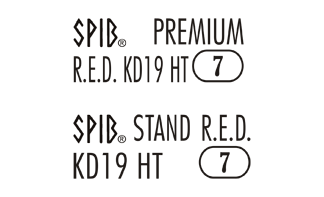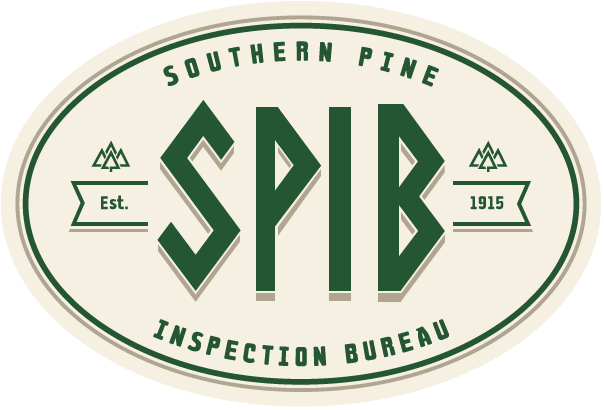FAQ
Resources
Frequently Asked Questions
Publications | FAQ
- What is SPIB's role in the inspection of treated wood products?
SPIB provides third-party audit inspections to Subscriber treated wood manufacturing facilities. These inspections include monitoring of in-plant quality control procedures and representative sampling of treated wood products. Samples are analyzed at the SPIB Chemical Laboratory and results are evaluated according to the American Wood Protection Association (AWPA) Standards M22 & M23. Plants in good standing are licensed to apply the distinctive SPIB Quality Mark to qualified treated wood products.
For more information on the inspection of treated wood products please contact the SPIB Treated Division.
- What are the design values for pressure-treated Southern Pine?
Reference design values for Southern Pine lumber are tabulated in the Design Values for Wood Construction Supplement of the National Design Specification® (NDS)® published by the American Wood Council. Reference design values for untreated lumber also apply to lumber that is pressure treated by an approved process and preservative. As a result, new design values that became effective June 1, 2013 also apply to visually graded Southern Pine dimension lumber that is pressure-treated.
Reference design values are based on normal load duration under the moisture service conditions specified; they must be multiplied by applicable adjustment factors to determine adjusted design values. Adjustment factors for untreated lumber also apply to pressure-treated lumber with one exception – in Allowable Stress Design applications allowing an increase with the Load Duration Factor, CD, that factor cannot exceed 1.6 for structural members pressure treated with waterborne preservatives.
For more information contact treated division.
- What do the stamps and tags on treated lumber mean?

Gradestamps are generally located 2 to 3 foot from the end of a piece of white (untreated) lumber. Gradestamps are specific to the Third-Party Agency that provides inspection to the lumber manufacturing mill and includes information on the grade of lumber, moisture content and mill identification.
When the lumber is subsequently treated, the treating plant usually attaches a plastic tag to the end of the lumber to identify treatment type, intended end use, applicable standards/specifications and the identification of the treating facility.
For more information on Treated Wood Quality Marks please contact the SPIB Treated Division.
- Is it normal for my treated lumber to check (split) after it's been exposed to the weather?
Checks in treated lumber are defined as a separation of the wood normally occurring across or through the rings of annual growth and usually are the result of seasoning. As the outer surface dries at a faster rate than the inside, the resulting shrinkage creates the separations. When lumber is placed in an environment that would tend to lower the moisture content of the piece, seasoning checks are the outward signs of additional drying. Lumber in an exposed environment will be in a constant state of drying to the equilibrium moisture content of the environment. Continued wetting and swelling, coupled with the subsequent drying and shrinking only exacerbates this condition.
Checks are a normal condition of all treated wood products. Although an aesthetic issue, checks rarely diminish service life of properly treated lumber products. Maintenance plays a vital role and all exposed treated wood products should be subject to a regimen of stain/sealant applications to help control the amount of moisture that the lumber will absorb. Care should be taken to allow the lumber to dry to the equilibrium moisture content of the environment before applying any type of sealant.
For more information on weathering effects of Treated Wood please contact the SPIB Treated Division.
- How can I find producers of specific treated wood products?
Please visit the SPIB Home Page to find our easy to use Buyers Guide.
